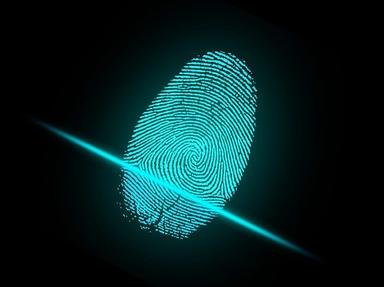Quiz Answer Key and Fun Facts
1. One of the fundamental tenets underlying forensic science is that when two objects come into contact with each other, material is swapped between them. What name, honoring the Frenchman who developed it, is given to this philosophy?
2. A story involving a sickle (farming implement) and flies is the first documented case of which branch of forensics?
3. Forensic dentistry is of great assistance in identifying human remains. What is another name for Forensic dentistry?
4. The 1911 case of the People vs Jennings was a landmark in forensics as it established the admissibility of which form of evidence uniquely identifying individuals in the United States?
5. A Forensic Anthropologist can determine the age, gender and ethnicity of a human being from a study of skeletal remains.
6. Which genetic material, whose structure was determined by Watson and Crick in 1953, has become an important component in forensic identification?
7. Which characteristic of fragments of metal (including bullets and bombs), glass, ceramics and even skid marks on exposed surfaces can be used to identify the origin of these materials?
8. This forensic device will be familiar to many in non-Islamic countries! It is used as an indicative test, which if positive then leads to a more definitive blood test. Detection is usually based on a reaction between yellow chromium (VI) and ethanol. What is the common name for this hand-held device?
9. A gas chromatograph is a sensitive laboratory instrument that can be used to separate and identify volatile components in a forensic sample. Which of these four samples would be most suitable for analysis using this technique?
10. An infamous miscarriage of justice occurred in Australia when Lindy Chamberlain was convicted for the 1980 murder of her baby daughter, Azaria, partially on the basis of some incorrect forensic data. She spent three years in prison. Finally in June 2012, the coroner completely exonerated Lindy. What decision did the coroner make at this time regarding Azaria's fate?
Source: Author
MikeMaster99
This quiz was reviewed by FunTrivia editor
WesleyCrusher before going online.
Any errors found in FunTrivia content are routinely corrected through our feedback system.

